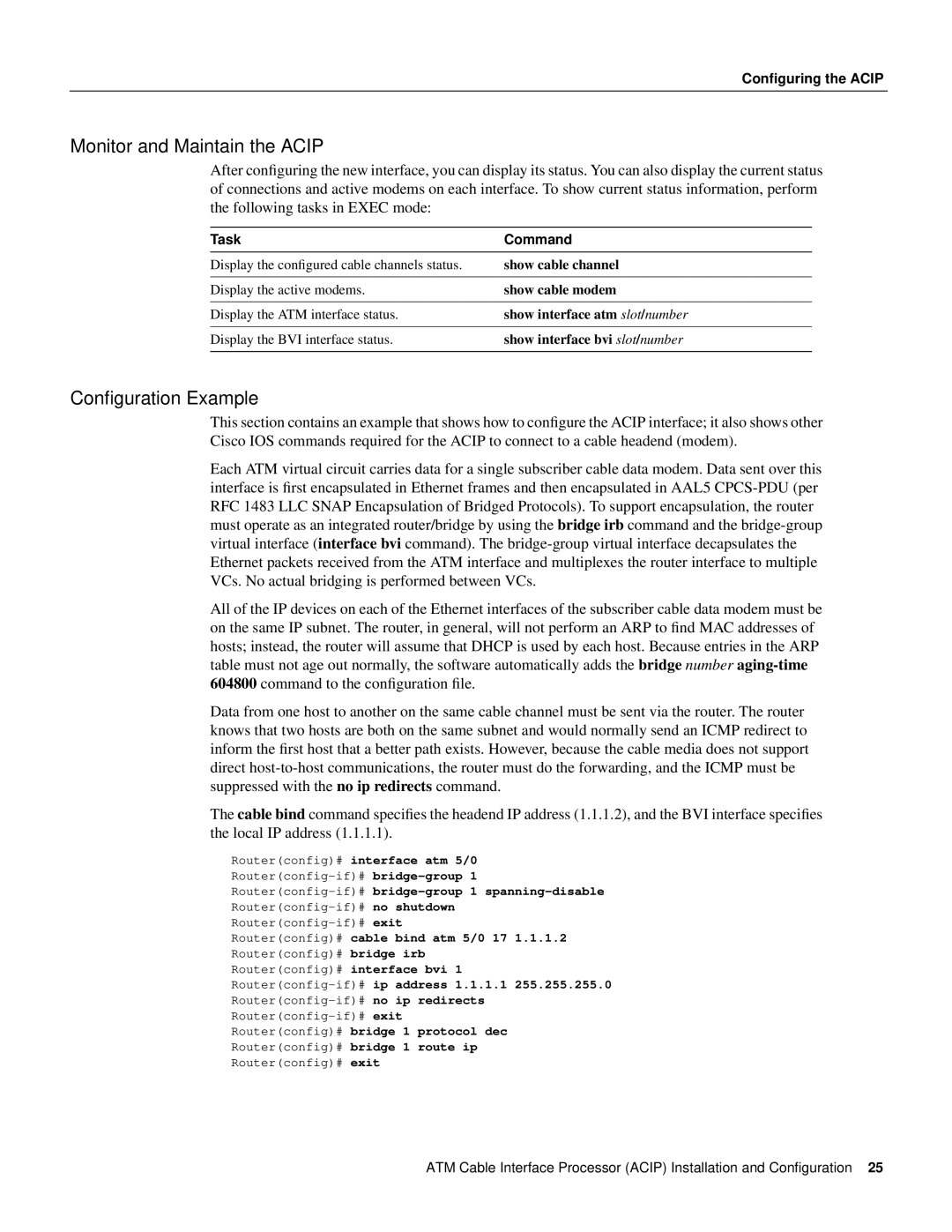
Configuring the ACIP
Monitor and Maintain the ACIP
After configuring the new interface, you can display its status. You can also display the current status of connections and active modems on each interface. To show current status information, perform the following tasks in EXEC mode:
Task | Command |
Display the configured cable channels status. | show cable channel |
|
|
Display the active modems. | show cable modem |
|
|
Display the ATM interface status. | show interface atm slot/number |
|
|
Display the BVI interface status. | show interface bvi slot/number |
|
|
Configuration Example
This section contains an example that shows how to configure the ACIP interface; it also shows other
Cisco IOS commands required for the ACIP to connect to a cable headend (modem).
Each ATM virtual circuit carries data for a single subscriber cable data modem. Data sent over this interface is first encapsulated in Ethernet frames and then encapsulated in AAL5
All of the IP devices on each of the Ethernet interfaces of the subscriber cable data modem must be on the same IP subnet. The router, in general, will not perform an ARP to find MAC addresses of hosts; instead, the router will assume that DHCP is used by each host. Because entries in the ARP table must not age out normally, the software automatically adds the bridge number
Data from one host to another on the same cable channel must be sent via the router. The router knows that two hosts are both on the same subnet and would normally send an ICMP redirect to inform the first host that a better path exists. However, because the cable media does not support direct
The cable bind command specifies the headend IP address (1.1.1.2), and the BVI interface specifies the local IP address (1.1.1.1).
Router(config)# interface atm 5/0
Router(config)# cable bind atm 5/0 17 1.1.1.2
Router(config)# bridge irb
Router(config)# interface bvi 1
Router(config)# bridge 1 protocol dec
Router(config)# bridge 1 route ip
Router(config)# exit
ATM Cable Interface Processor (ACIP) Installation and Configuration 25
